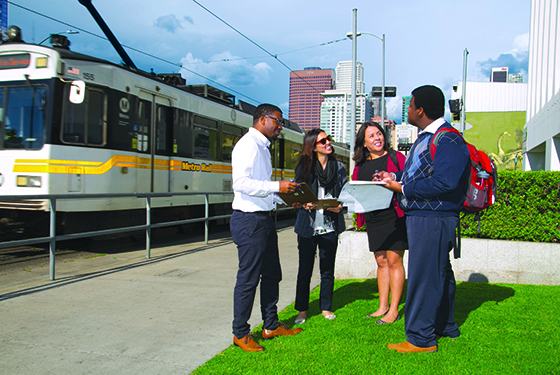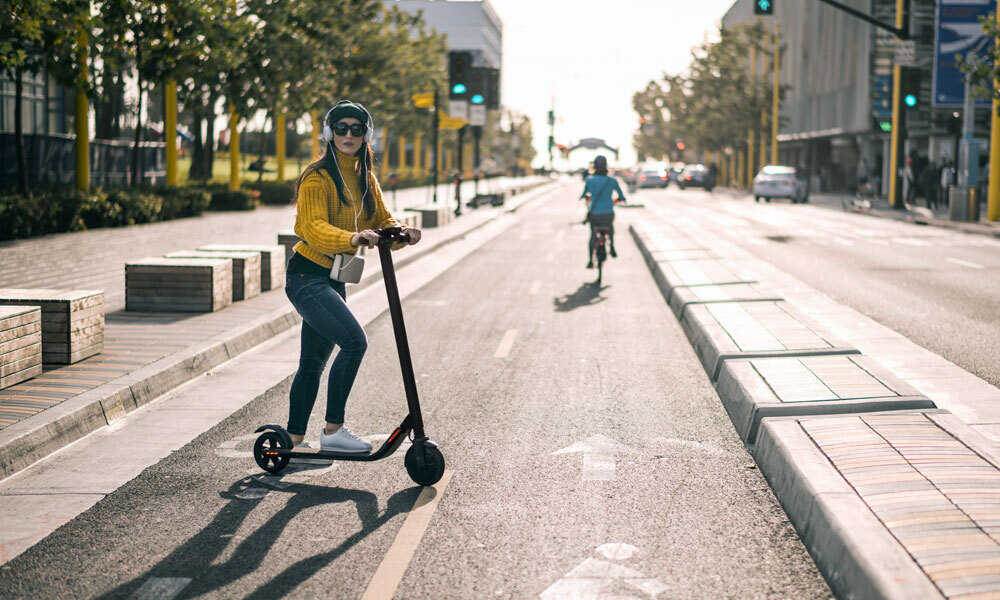Los Angeles is poised to build more bus and bike lanes, as well as wider sidewalks, after voters last week approved Measure HLA. The ballot initiative – which received 63% of votes cast as of last week – requires the city to install street enhancements outlined in its Mobility Plan 2035 when it makes road repairs.

The measure’s victory is a big deal not only in Los Angeles, but across the nation, according to Marlon Boarnet, director of the METRANS Transportation Consortium, which is based at the USC Sol Price School of Public Policy.
“This is being watched nationally,” Boarnet told the Los Angeles Times. “It’s a signal across the country that people really value streets where, yes, they can drive, but they could also walk, they could also bicycle.”
Now that the measure has passed, we asked Boarnet to explain what Measure HLA requires and how it could affect city streets.
What is the goal of Measure HLA? What problem is it trying to solve?
Measure HLA requires that when the city does work on a street – repair, maintenance, or improvements – they have to implement the Mobility Plan 2035 adopted in 2015. In brief, HLA requires that the city implement its existing plan, which envisions a network of bus lanes, bicycle lanes, and wider sidewalks. The goal is not to replace the car, but to build streets that allow both car travel and other safe and convenient non-car options.
What can METRANS research tell us about HLA and the city’s mobility plan?
One interesting point is that we, briefly, already did something like HLA in Los Angeles. At the start of the COVID-19 pandemic, cities worldwide created slow-streets programs to allow persons to walk, bicycle, and dine outside – on streets – during a time when COVID transmission indoors was risky and still poorly understood.
We at METRANS studied that program, in work funded by the National Center for Sustainable Transportation. From spring through fall of 2020, Los Angeles implemented 50 miles of these slow streets. We examined the effect of this rapid slow street implementation on shared electric scooter travel in four cities, as a marker to inform how large networks of street infrastructure that supports walking and bicycling can encourage non-car travel. We found that scooter trips increased by 54.78% on COVID slow streets in Oakland, 22.16% in Los Angeles, 74.5% in San Francisco, and 10.77% in Portland.

Master of Urban Planning
Make Cities More Just, Livable & Sustainable
USC’s MUP degree trains students to improve the quality of life for urban residents and their communities worldwide.
Find Out MoreWhile we only had data for shared electric scooter trips in our study, the research gives a strong hint that building streets that are inviting for walkers, bicyclists, and others will lead to increases in non-car travel.
When can Angelenos expect to see projects in their communities?
Passing HLA is exciting, but change takes time. The measure will require that when normal street maintenance is done, the city builds its 2035 plan. What that means is that the next time your street is repaved, or utility work is done, a program of bicycle lanes or bus transit lanes might follow. This will not happen everywhere, but on key corridors that are ripe for bus, bicycle, and walking travel.





